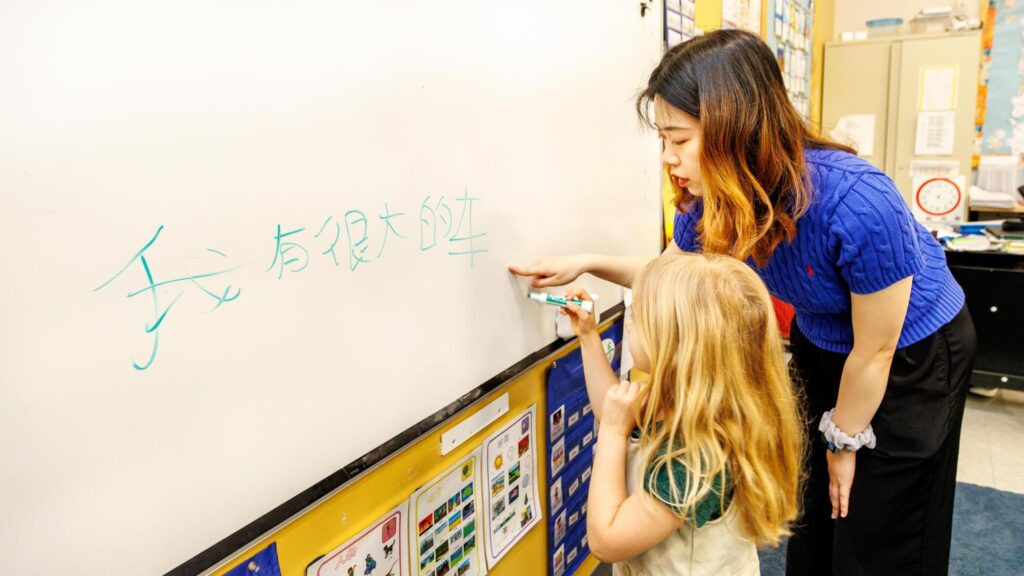
Mandarin Language
In a Mandarin immersion school, students learn content such as math or science in a second language as well as in English. One of the reasons we use a full immersion preschool program at HudsonWay Immersion School (HWIS) is so our students have a strong language foundation by kindergarten. In Grade 2 we introduce pinyin, the romanization of Chinese characters.
Mandarin Language Immersion at HudsonWay
We use programs such as Better Chinese and Level Chinese to help us collect students' data and identify each student's reading or writing level. Level Chinese provides visualization of real-time data in alignment with the Common Core Standards and the ACTFL Performance Descriptors. Students have access to the reading materials that match their level and practice their reading comprehension skills. Through the reading comprehension questions, teachers are able to identify the areas in which students have difficulty and tailor instruction to improve each child individually.
Our students are provided the opportunity to take the AP Chinese Language and Culture test in Grade 7 or 8, enabling them to earn the Global Seal of Biliteracy.
Once students enter the workforce, Mandarin bilingualism and biliteracy open a world of opportunities. According to the most recent Korn/Ferry International Quarterly Executive Recruiter Index, multilingual executives have a clear competitive advantage, especially when it comes to job recruitment in the United States.
